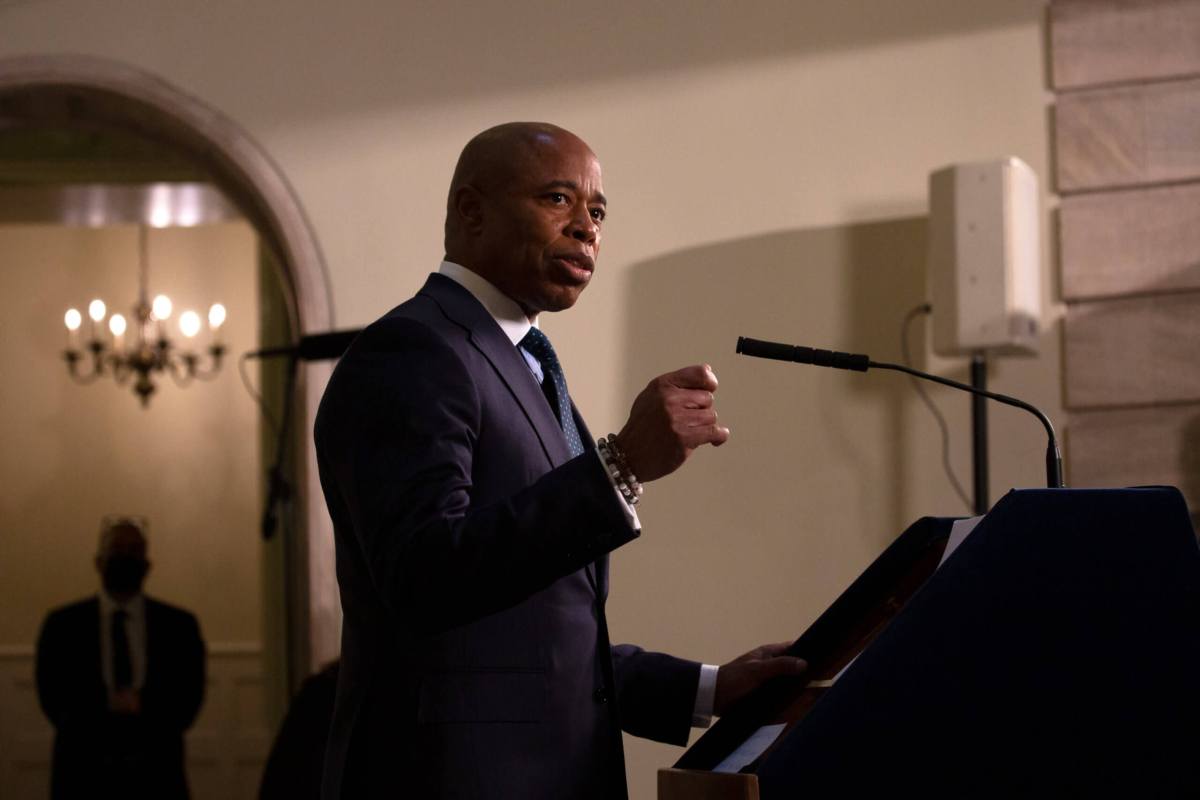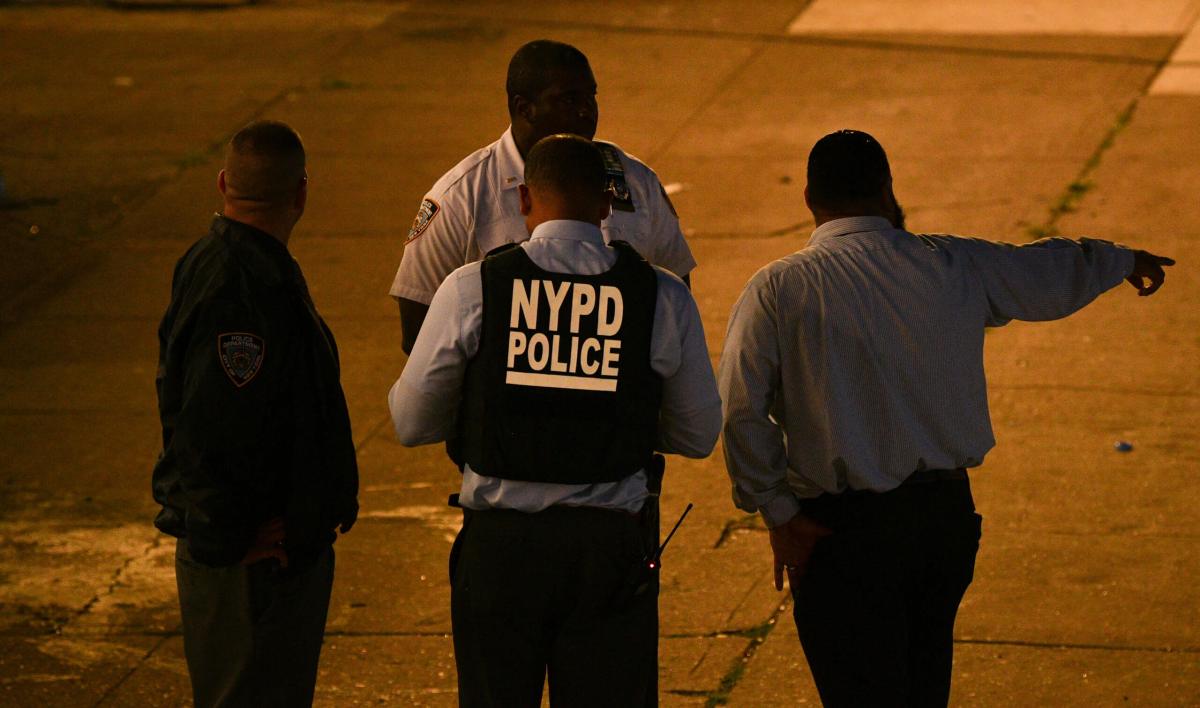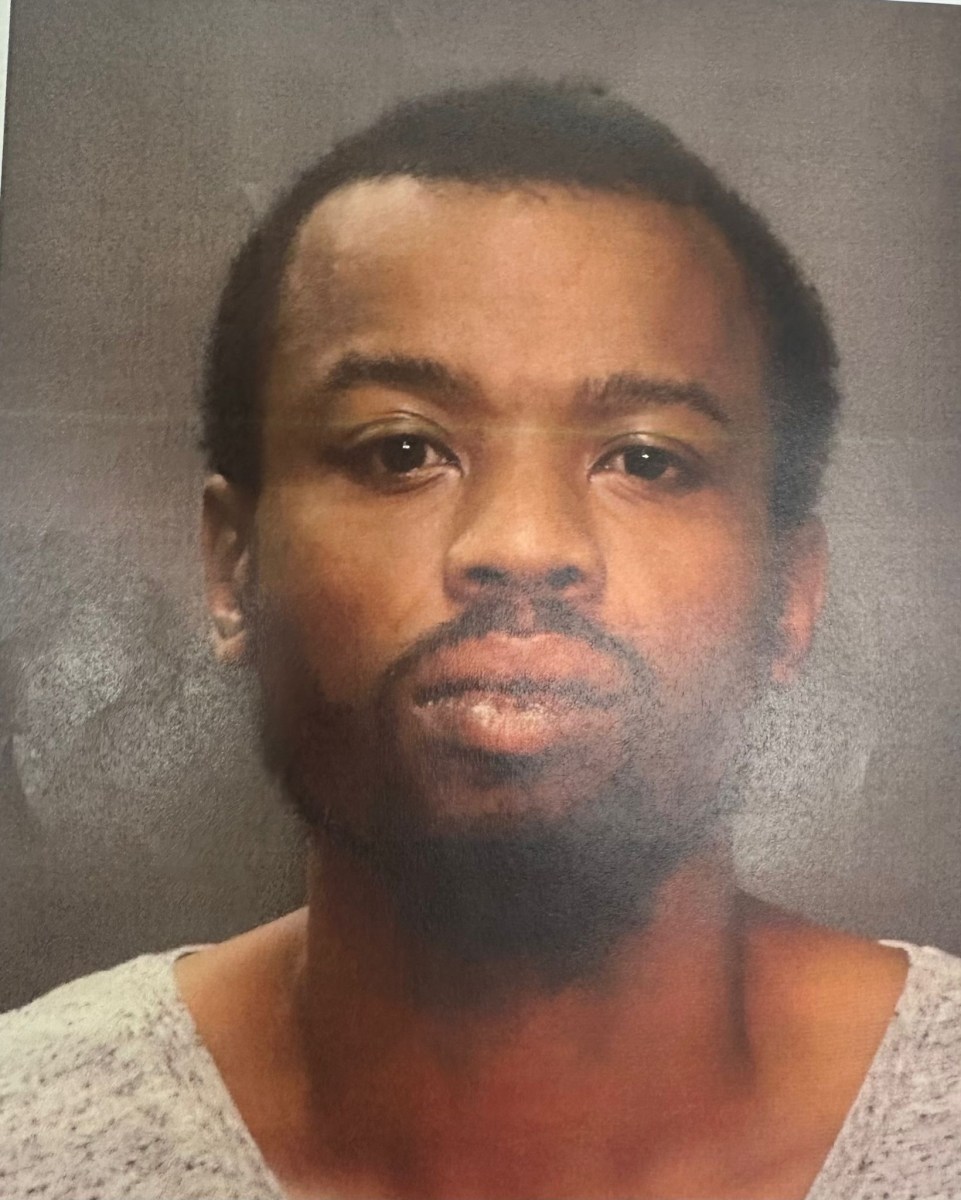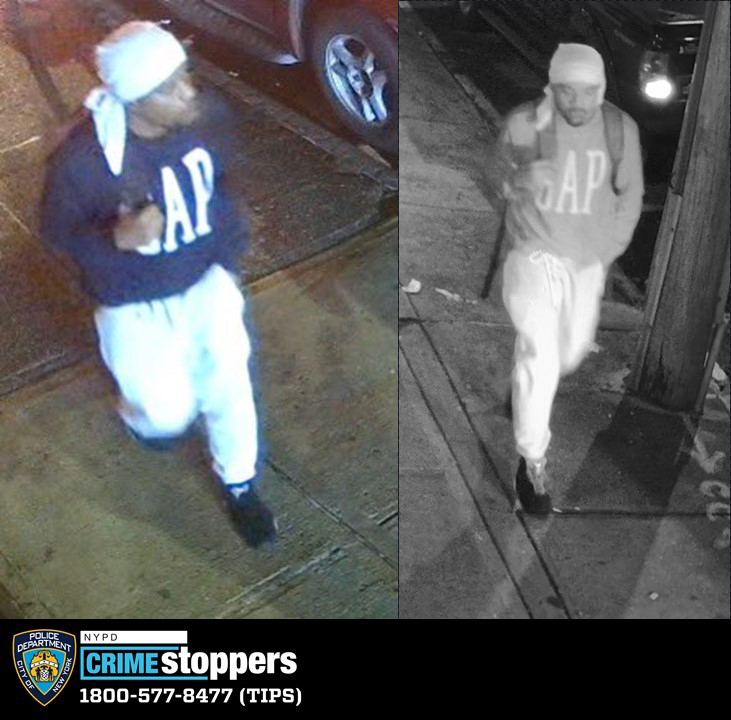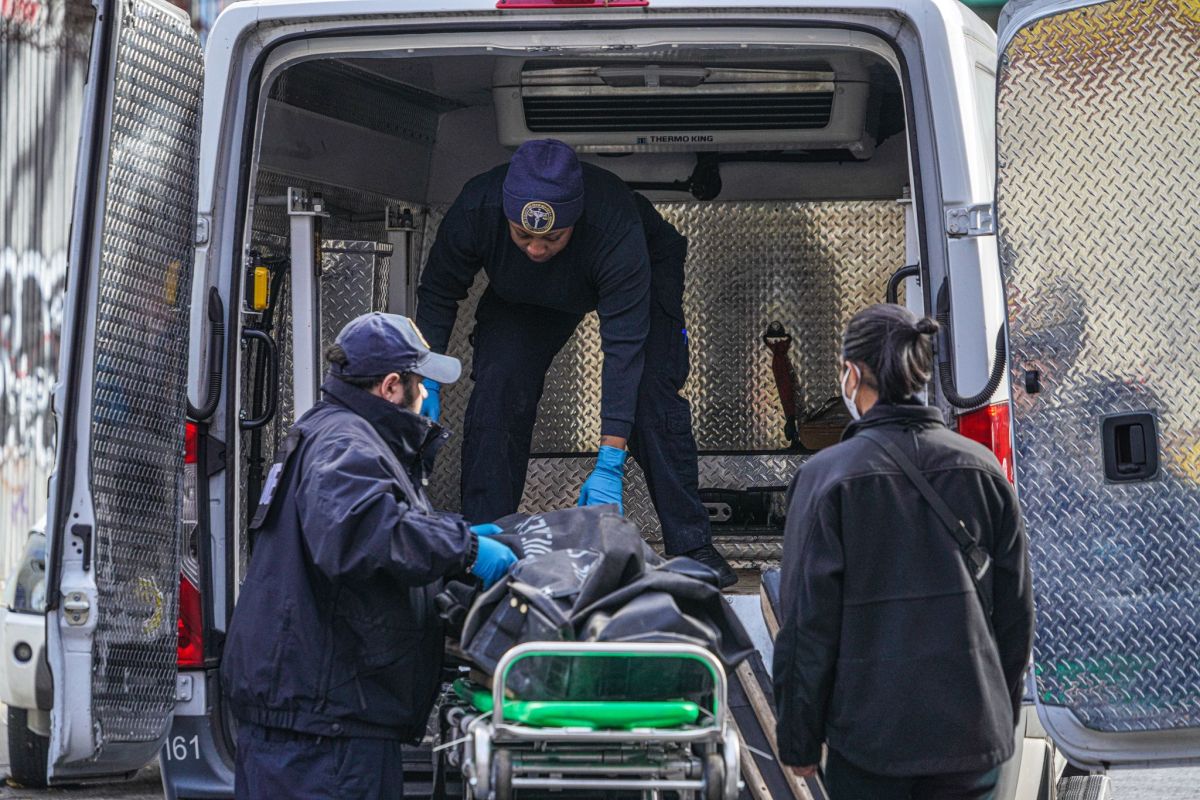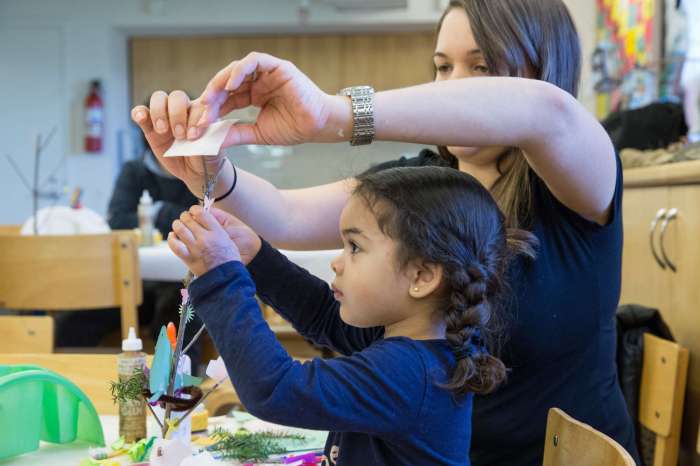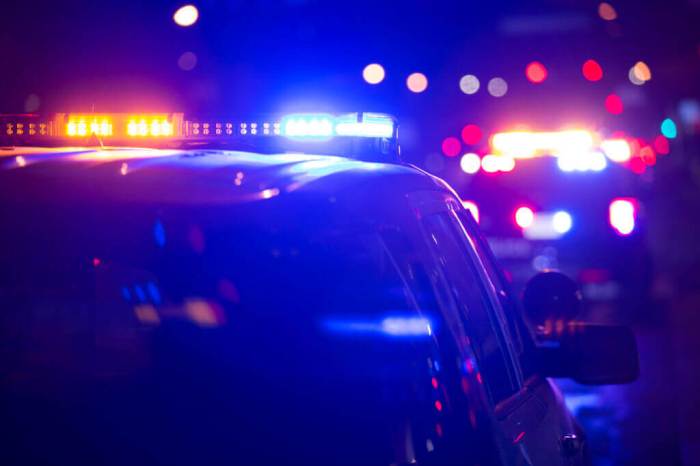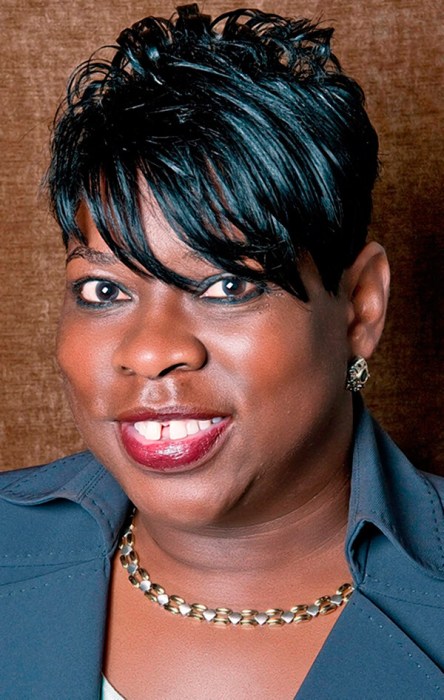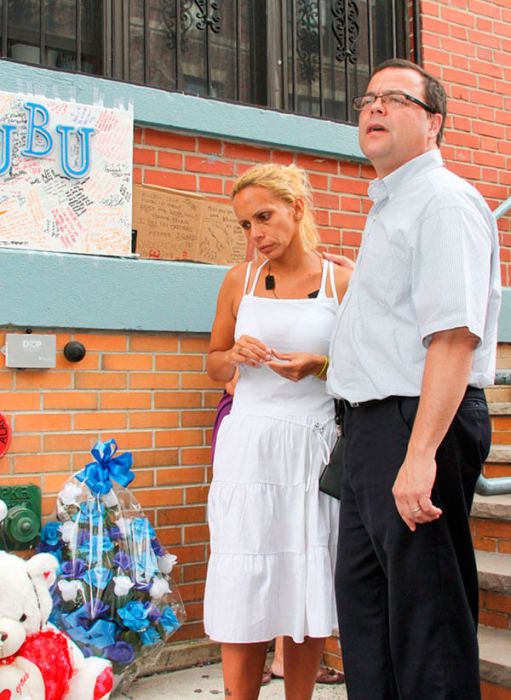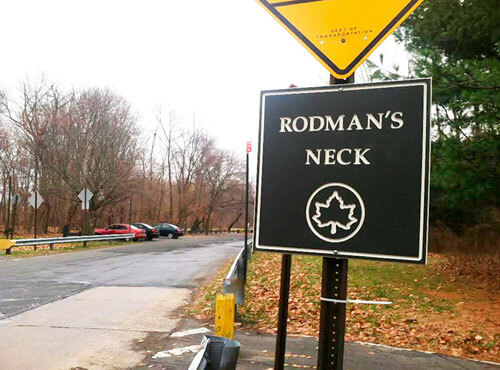This article was originally published on by THE CITY
Mayor Eric Adams on Monday unveiled a “blueprint” for stemming gun violence in New York City — calling to bolster police units, stiffen state laws and involve multiple agencies in addressing the crisis.
It follows a series of high-profile shootings, including that of an 11-month old and the killing of 22-year-old NYPD officer Jason Rivera and critical wounding of 27-year-old officer Wilbert Mora as they responded to a domestic incident at a Harlem apartment Friday.
The man who opened fire on the officers — Lashawn McNeil — died after being shot by a third officer who responded to the scene, the mayor said following a press conference at City Hall.
Adams outlined his vision in a 24-minute speech streamed online — one that significantly bolsters the standing of crisis management teams and “cure violence” groups funded by City Hall but still not fully embraced by the NYPD.
The groups, whose staff includes reformed gang members and others with histories with the criminal justice system, are contracted by the Mayor’s Office of Criminal Justice to prevent violence in communities and keep the peace.
They also offer supports that can steer community members away from crime and toward educational opportunities or jobs.
Adams characterized the crisis management staffers, along with police officers who tackle gun violence, as “Marines,” and promised to give them new support for their work by integrating the efforts of other city agencies.
“Everyone believes that the gang and crime crisis is the NYPD’s problem. No it is not,” Adams said at the top of the press conference. “Every agency in this city must be involved in the number-one threat in our city — and that’s violence.”
Adams said he would divert funding from within the mental health initiative formerly known as Thrive to better target homeless people living on streets. He plans to advocate for tweaks to statewide bail reform and prosecutions of 16-and-17-year-olds charged with gun crimes.
And he said he was looking to introduce the use of new technology that can detect when someone is carrying a firearm.
For the first time, he said he supports a residency requirement for NYPD members to live in the five boroughs.
Adams also reiterated prior plans to transform a disbanded “anti-crime” unit into an anti-gun unit targeting 30 high-crime precincts, and to increase coordination with the federal government to stop the flow of illegal weapons in to New York.
Connecting the Interrupters
But much of his speech zeroed in on the cure violence organizations — and ways the NYPD and other city agencies can support their work.
For the crisis management system, Adams said he wants the city’s public hospitals to accommodate the groups with a room after a shooting to help prevent retaliation.
He said the groups should have a direct link to city workforce development, in order to connect community members to jobs, and to the Department of Sanitation to call for cleanup of an area where dealers are stashing drugs or guns.
Adams said each agency would get a liaison to coordinate with the groups, the NYPD and City Hall. Multiple sources noted that the Office of Neighborhood Safety, part of MOCJ, already serves, at least in part, to coordinate between agencies and communities.
At a roundtable discussion with crisis management groups leaders Saturday, Adams went into even greater detail on the level of cooperation he expected them to receive from city agencies — particularly the NYPD and Department of Education.
“If you reach out to the police and say, ‘Listen, something’s about to jump off,’ they should not be trying to disrespect you — they should be finding out, how do we help?” Adams said. “We’re going to make sure everyone is on the same page.”

Ben Fractenberg/THE CITY
Adams told the group leaders he plans to use the level of cooperation precinct commanders show the crisis management teams as a factor in promotion decisions within the NYPD.
He also invited a member from Bronx Rises Against Guns to meet with Deputy Mayor Phil Banks to discuss how training of officers in the anti-gun unit, which is set to be deployed within weeks, could be updated to meet current conditions.
And the mayor said he’d like to reduce the number of school safety agents at schools while increasing the presence of crisis management teams within a year or two.
“We’re not moving our school security agents overnight, but we see that we can start changing the flow of things,” he said.
Asked about police buy-in for working with the crisis management groups, a ranking NYPD official who spoke on the condition of anonymity said unless city officials create guidelines regarding the partnership, little was likely to change.
The source added that some corners of the department don’t have a history of working cooperatively with the groups or aren’t familiar with them.
Liz Glazer, former director of the Mayor’s Office of Criminal Justice under de Blasio, said the cooperation between the groups and the police department needs to strike a delicate balance.
“I think it has to be bought into not just by the commissioner, but at the precinct level, as well. You know, the commander needs to buy into it,” said Glazer, who left City Hall in late 2020.
She also noted that the crisis management groups can’t be perceived by the community as working too closely with the police department or they’ll lose credibility.
“So, there needs to be both coordination at sort of a higher level, but also a little bit of separation, and that’s the delicacy of negotiating those relationships,” said Glazer.
Jeffrey Butts, who runs the Research and Evaluation Center at John Jay College, says setting up cure violence programs in a way that generates evidence of what methods work to reduce shootings will be essential going forward,
“If people just embrace the brand and use it to justify whatever they’re doing, it will eventually lose that appeal. And people will start criticizing it and say it doesn’t work,” said Butts.
Live Experiment
Last winter, THE CITY first reported on one possible model, when police in the 73rd Precinct in Brownsville, Brooklyn, agreed to retreat from a two-block area and allow a local Cure Violence group — Brownsville In, Violence Out — to keep the peace.
Other members of the Brownsville Safety Alliance, from local community organizations to city agencies, were also present to offer services to passer-bys in the no-cop zone.
The initial five-day experiment — attempted during driving snow — went off without a hitch, with no valid 911 or 311 calls made.
The second round of the experiment in warmer months also saw success — with BIVO and other community partners finding a missing 4-year-old and intervening in a fight brewing between groups of teenage girls, all without the help of police.

Hailey Nolasco, director of community-based violence prevention at the Center for Court Innovation, attended Saturday’s roundtable with Adams and told THE CITY that the new mayor’s pledge to further invest in projects like hers made her “hopeful.”
“When somebody pulls a trigger, it’s because the system has failed them so many times already,” she said, pointing to schools, food and health care as resources many communities lack.
“That’s when you get the perfect recipe for community violence,” she added. “So if we’re really focusing on what to do, what are these root causes, then we can really make a meaningful impact in public safety.”
Youth Focus
On the legislative fixes in Albany, Adams said he’d like New York to join the 49 other states in allowing judges to factor in the dangerousness of the alleged perpetrator in setting bail.
He also said 16- and 17-year-olds were being forced by older associates to take the hit on gun possession charges knowing that they would be charged as juveniles in Family Court rather than face prosecution in criminal court.
Adams said the teens should be given a chance to identify their older associates in those cases, or else be prosecuted in criminal court.
Staten Island District Attorney Michael McMahon supported those ideas on Twitter.
But Butts urged caution with accepting a rise in youth gun arrests as evidence for Adams’ pushback on Raise the Age.
“It’s also possible that people carry more guns in 2021 compared to 2019, which is true all over the place, all ages,” he said.
Additionally, public defender groups that included The Legal Aid Society put out a joint statement rejecting the proposals, noting that some youthful offenders can already be tried as adults.
“We call on the Legislature to reject the Mayor’s wrongheaded proposals to rely on discredited punitive approaches and focus on investing in our communities,” the statement said.
THE CITY is an independent, nonprofit news outlet dedicated to hard-hitting reporting that serves the people of New York

